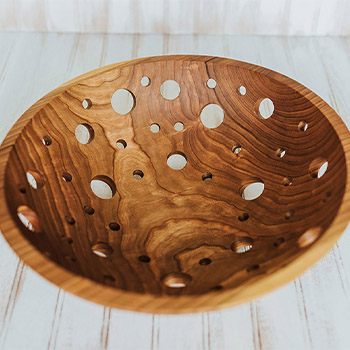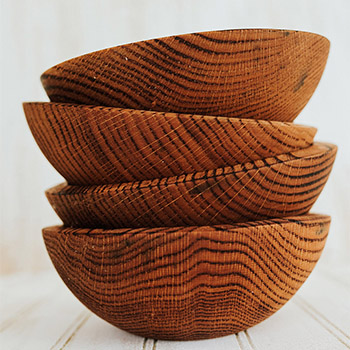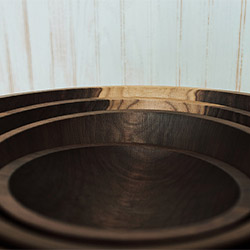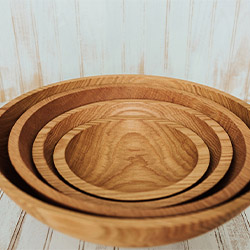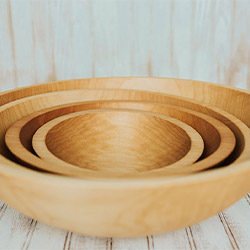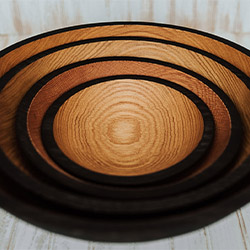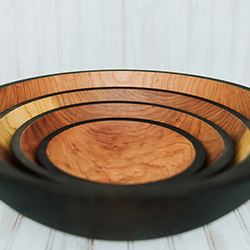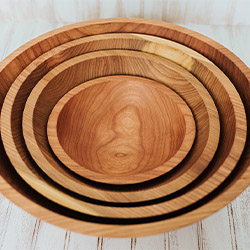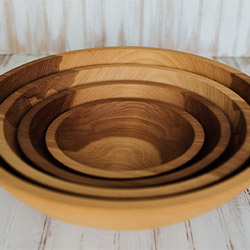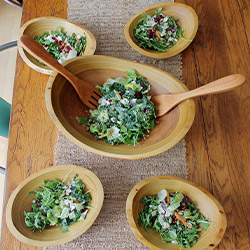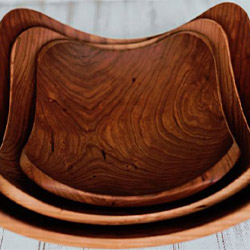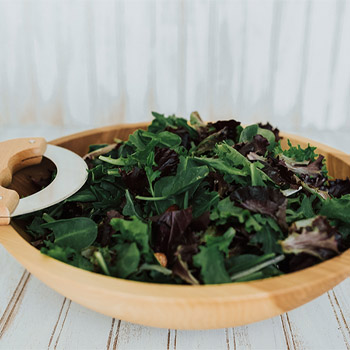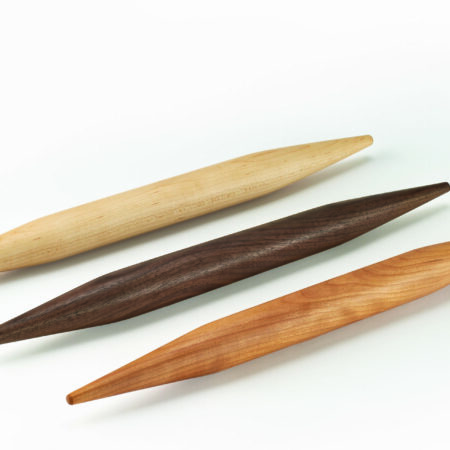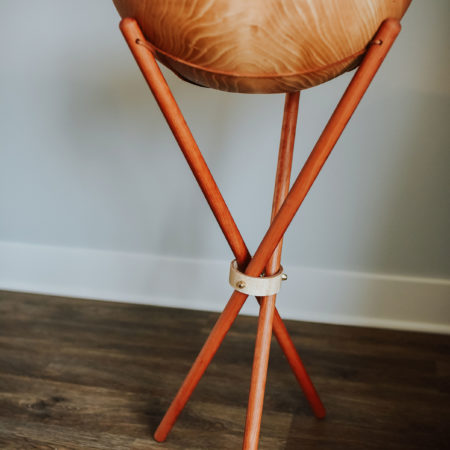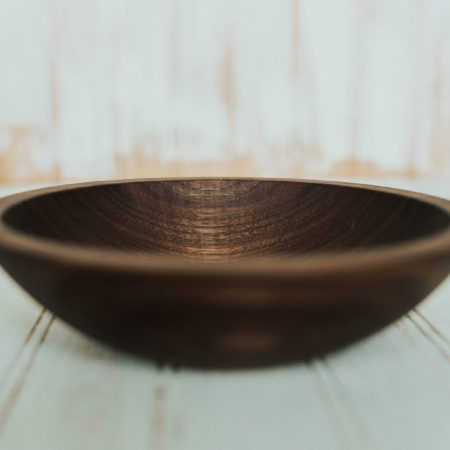When it comes to presenting salad in rustic wooden bowls, striking the balance between simplicity and elegance is key. The earthy charm of the wooden vessel can elevate the freshness of your ingredients, but there’s more to it than just tossing greens. Consider how the bowl’s texture interacts with the salad’s crispness and vibrancy of the toppings, creating a sensory experience that goes beyond taste.
Key Takeaways
- Choose a size-appropriate wooden bowl for salad presentation.
- Layer ingredients strategically for visual appeal.
- Mix dressing in wooden bowls for enhanced flavors.
- Use wooden utensils to serve and maintain the rustic theme.
- Store salad in lined wooden bowls to preserve freshness.
Choosing the Right Wooden Bowl
When presenting salad in rustic wooden bowls, selecting the right vessel is vital for enhancing the overall aesthetic appeal of your dish. Size selection plays an important role in ensuring your salad looks visually pleasing. Opt for a bowl that’s large enough to hold the salad comfortably without overcrowding it. This allows the ingredients to be showcased beautifully, creating an inviting display for your guests.
Bowl materials are another important factor to evaluate. Wooden bowls come in a variety of materials, each offering a unique look and feel. Maple and cherry wood are popular choices due to their durability and attractive grain patterns. These materials provide a natural and rustic charm and add warmth to your table setting.
When choosing a wooden bowl, pay attention to the craftsmanship and finish. A well-crafted bowl with a smooth finish won’t only look aesthetically pleasing but also ensure that your salad is presented in a professional and elegant manner.
Additionally, assess the weight of the bowl. A sturdy bowl will prevent accidental spills and provide stability when serving your salad.
Washing and Drying the Bowl
When it comes to washing and drying your rustic wooden bowl, remember to gently hand wash it with warm, soapy water.
Avoid using harsh chemicals or abrasive scrubbers that can damage the wood’s natural finish.
For drying, opt for the towel drying method to ensure the bowl is completely dry before storing or using it for your next salad presentation.
Cleaning the Bowl
After enjoying a delightful meal served in your rustic wooden bowl, it’s crucial to properly clean it to maintain its natural beauty and integrity.
To start, avoid soaking the bowl in water for extended periods, as it can lead to warping or cracking. Instead, gently wash the bowl with warm water and mild dish soap. Use a soft sponge or cloth to wipe the interior and exterior, removing all food particles.
Once cleaned, rinse the bowl thoroughly to remove any soap residue. Avoid using harsh chemicals or abrasive cleaners that can damage the wood.
After rinsing, pat the bowl dry with a clean towel to remove excess moisture.
To prevent the wood from drying out and cracking, it’s vital to occasionally apply a food-safe wood conditioner. This will help maintain the bowl’s natural luster and extend its lifespan.
Regular bowl maintenance and proper wood care will ensure your rustic wooden bowl remains a cherished piece in your kitchen for years to come.
Towel Drying Method
To maintain your rustic wooden bowl’s natural beauty and longevity, the towel drying method is a simple yet effective way to ensure thorough cleaning and proper care.
After washing your wooden bowl with mild dish soap and warm water, it’s essential to towel dry it immediately to prevent moisture from seeping into the wood.
Gently use a clean kitchen towel to absorb any remaining water droplets, ensuring that the bowl is completely dry inside and out.
This method removes excess moisture and helps control the humidity levels that can potentially harm the wood over time.
Layering Salad Ingredients Thoughtfully
As you thoughtfully layer the salad ingredients in the rustic wooden bowls, consider starting with a foundation of crisp, vibrant greens. The base sets the tone for your salad, providing a fresh and colorful backdrop for the rest of the ingredients to shine.
Think about ingredient combinations that complement each other, creating a harmonious blend of flavors and textures. For example, pairing the crunchiness of cucumbers with the creaminess of avocado can add both textural contrasts and a delightful taste experience.
After laying down the greens, continue to build your salad by strategically placing other ingredients. Consider adding bursts of sweetness with cherry tomatoes or thinly sliced strawberries. These pops of color enhance the visual appeal of your salad and offer a pleasant surprise for your taste buds.
Remember to incorporate protein-rich elements like grilled chicken or chickpeas to make your salad more satisfying and balanced.
As you artfully arrange each ingredient in the wooden bowl, consider the overall composition. Aim for a balanced distribution of colors, textures, and flavors to create a salad that isn’t only delicious but also visually appealing.
Mixing Dressing in Wooden Bowls
Now that you’ve beautifully layered your salad ingredients in those rustic wooden bowls, it’s time to give attention to the mixing of the dressing.
Emulsifying the dressing in a wooden bowl can enhance its flavors and textures, ensuring each bite is a delightful balance of taste.
Consider the practicality of serving the salad in these charming bowls, allowing guests to toss their own portions and enjoy a communal dining experience.
Dressing Emulsification Process
The process of emulsifying dressing in rustic wooden bowls adds a touch of artisanal flair to your salad presentation. When preparing your dressing, remember that emulsions are all about balance.
Pay attention to your oil ratios to achieve the perfect emulsification. Start by slowly drizzling your oil into the dressing’s acidic components while whisking vigorously. This helps create a stable emulsion that prevents separation.
Wooden bowls are excellent for this process as they retain heat, aiding in the emulsification. The natural texture of the wood also adds a charming element to your culinary creation.
As you mix the ingredients in the wooden bowl, feel the connection to tradition and nature, enhancing the overall experience. Embrace the art of emulsion techniques in your salad-making routine, and watch as your guests are impressed by the rustic charm and delicious flavors you bring to the table.
Proper Dressing Distribution
To achieve ideal flavor infusion and secure every leaf is coated with your meticulously crafted dressing, mastering the art of proper dressing distribution is key.
When mixing dressing in wooden bowls, remember that the right dressing ratios are essential for achieving the perfect flavor balance. Begin by pouring a small amount of dressing over the salad greens and gently tossing with salad tongs. Gradually add more dressing as needed, making sure that each leaf gets a light but even coating.
To prevent overdressing, start with a little and build up gradually until you reach the desired taste.
Wooden bowls have a porous surface that can absorb excess dressing, so it’s important to mix in batches if you have a large salad to avoid soggy greens. Gently tossing and turning the salad will evenly distribute the dressing, enhancing the overall flavor without overwhelming the fresh ingredients.
Serving Practicality Considerations
For a truly rustic and charming presentation of your salad, utilizing wooden bowls adds a touch of natural elegance to your dining experience. When considering serving practicality, wooden bowls come in various sizes to accommodate different portion sizes. This allows you to serve individual salads or larger shared portions, making them versatile for any occasion.
Wooden bowls also enhance the aesthetics of your salad presentation. The warm tones and unique grain patterns of the wood complement the vibrant colors of fresh vegetables, creating a visually appealing display that’s sure to impress your guests.
Additionally, the natural textures of the wooden bowls add depth and character to the overall look of the salad, elevating its presentation to a new level of sophistication.
When mixing dressing in wooden bowls, ascertain that the size of the bowl matches the serving size of your salad. This will prevent overcrowding and make it easier to evenly distribute the dressing without spillage.
Garnishing for Visual Appeal
Using a variety of colorful and fresh ingredients to garnish your salad can enhance its visual appeal and make it even more enticing. Consider adding herb garnishes like fresh basil or mint leaves for a pop of green and aromatic fragrance. Edible flowers such as pansies or nasturtiums add a touch of elegance and a subtle floral note to your dish.
To create visual interest, incorporate colorful vegetables like cherry tomatoes, thinly sliced radishes, or vibrant bell peppers. Texture contrast is key in garnishing – try sprinkling crunchy seeds or nuts atop your salad for a delightful crunch. Validate flavor balance by adding seasonal ingredients that complement the base flavors of your salad.
When drizzling dressing, aim for a graceful cascade that enhances both taste and appearance. For a visually striking presentation, pay attention to ingredient arrangement. Create visual height by stacking ingredients like avocado slices or grilled vegetables.
Experiment with color layering to make your salad visually appealing, like arranging red and yellow tomatoes alternately or placing purple cabbage alongside leafy greens. By garnishing thoughtfully, you elevate the visual appeal of your salad and also make it a feast for the eyes before the first bite.
Serving and Plating Techniques
With rustic wooden bowls as the vessel for your vibrant salad creation, serving and plating techniques play an essential role in enhancing the overall dining experience.
Regarding salad presentation, consider layering your ingredients strategically to create a visually appealing display. Start by placing a bed of fresh, crisp greens at the bottom of the bowl, such as vibrant spinach leaves or peppery arugula.
Next, add your colorful vegetables like cherry tomatoes, slices of cucumber, and shredded carrots to add contrast and texture.
To elevate the bowl aesthetics, think about incorporating contrasting colors and textures. For example, you can sprinkle a handful of crunchy croutons over the top for a delightful crunch or add a sprinkle of colorful pomegranate seeds for a burst of flavor.
When serving your salad, ensure that each ingredient is evenly distributed throughout the bowl to ensure a balanced bite in every forkful.
When plating your salad, consider using wooden serving utensils to maintain the rustic theme and avoid damaging the bowl. Gently toss the salad ingredients together just before serving to ensure that the flavors are well combined.
Maintaining the Wooden Bowl
Maintaining the wooden bowl involves essential care practices to secure its longevity and preserve its natural beauty. To begin, regularly treat your wooden bowls with food-safe wood treatment oils like mineral oil or beeswax.
Apply a thin layer of oil to the bowl’s surface, allowing it to penetrate the wood to prevent drying and cracking. This simple step nourishes the wood and enhances its luster, keeping it fresh and vibrant.
When it comes to day-to-day bowl maintenance, hand wash your wooden bowls with mild soap and warm water. Avoid soaking them or putting them in the dishwasher, as excessive moisture can warp the wood.
After washing, dry the bowls immediately with a soft cloth to prevent water damage. Additionally, store your wooden bowls in a cool, dry place away from direct sunlight to maintain their color and prevent warping.
Regularly inspect your wooden bowls for any signs of wear or damage. If you notice scratches or rough spots, gently sand the affected areas with fine-grit sandpaper, following the wood grain.
Storing Salad in Wooden Bowls
Storing your salad in rustic wooden bowls perfectly showcases and preserves its freshness, adding a touch of charm and natural elegance to your dining table.
Salad storage in wooden bowls requires a few simple steps to ensure your greens stay crisp and flavorful.
When storing salad in wooden bowls, it’s crucial to line the bowl with a clean, dry cloth or paper towel before adding your salad ingredients. This helps absorb excess moisture and prevents the wood from absorbing any liquids that could potentially damage the bowl.
Additionally, avoid storing acidic dressings directly in the wooden bowl, as they can cause discoloration and affect the wood’s integrity over time. Instead, consider serving dressing on the side and letting your guests drizzle it over their salad to maintain the bowl’s preservation.
Cover the wooden bowl with a fitted lid or plastic wrap to keep your salad fresh for longer. This helps seal in the freshness and prevent any external odors from affecting the salad.
If you plan to store the salad in the refrigerator, make sure to place the wooden bowl on the top shelf to avoid temperature fluctuations that could impact the salad’s quality.
Showcasing Salad Creatively
To truly elevate your salad’s presentation, consider embracing your creativity and infusing a touch of artistry into how you showcase your greens. When it comes to salad presentation, think beyond just tossing ingredients together; instead, aim to create a visual feast that tantalizes the taste buds and delights the eyes. Embracing rustic aesthetics can add a charming and cozy feel to your salad display.
One creative way to showcase your salad is by layering the ingredients in a visually appealing manner. Start by placing a bed of fresh, vibrant greens at the bottom of your wooden bowl. Then, artfully arrange colorful vegetables, fruits, nuts, and seeds on top, creating a beautiful mosaic of flavors and textures.
Another idea to add a touch of creativity to your salad presentation is by incorporating edible flowers or herbs as garnishes. These delicate additions enhance the visual appeal of your dish and also infuse it with a subtle hint of elegance.
Consider using different shapes and sizes of wooden bowls to create visual interest and depth in your salad presentation. Mixing and matching bowls of varying heights can add dimension to your table setting, making your salad the star of the show.
Final Thoughts
Now that you’ve mastered the art of presenting salad in rustic wooden bowls get ready to wow your guests with a visually stunning and delicious dining experience. Remember, the key is to layer your ingredients thoughtfully, mix your dressing in the wooden bowl for ideal flavor, and garnish with flair. With these tips, your salads will be so good they’ll make your taste buds do a happy dance!
